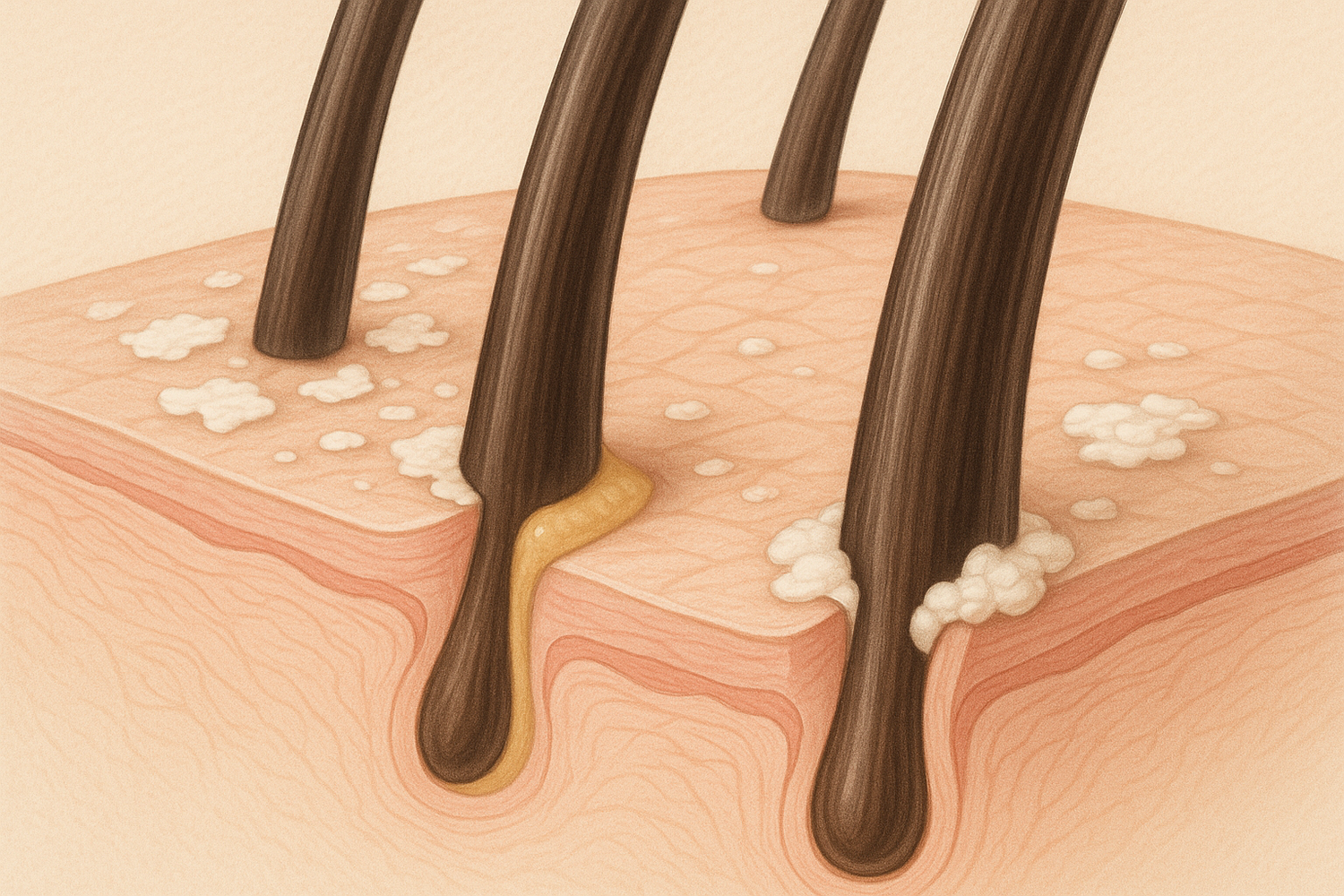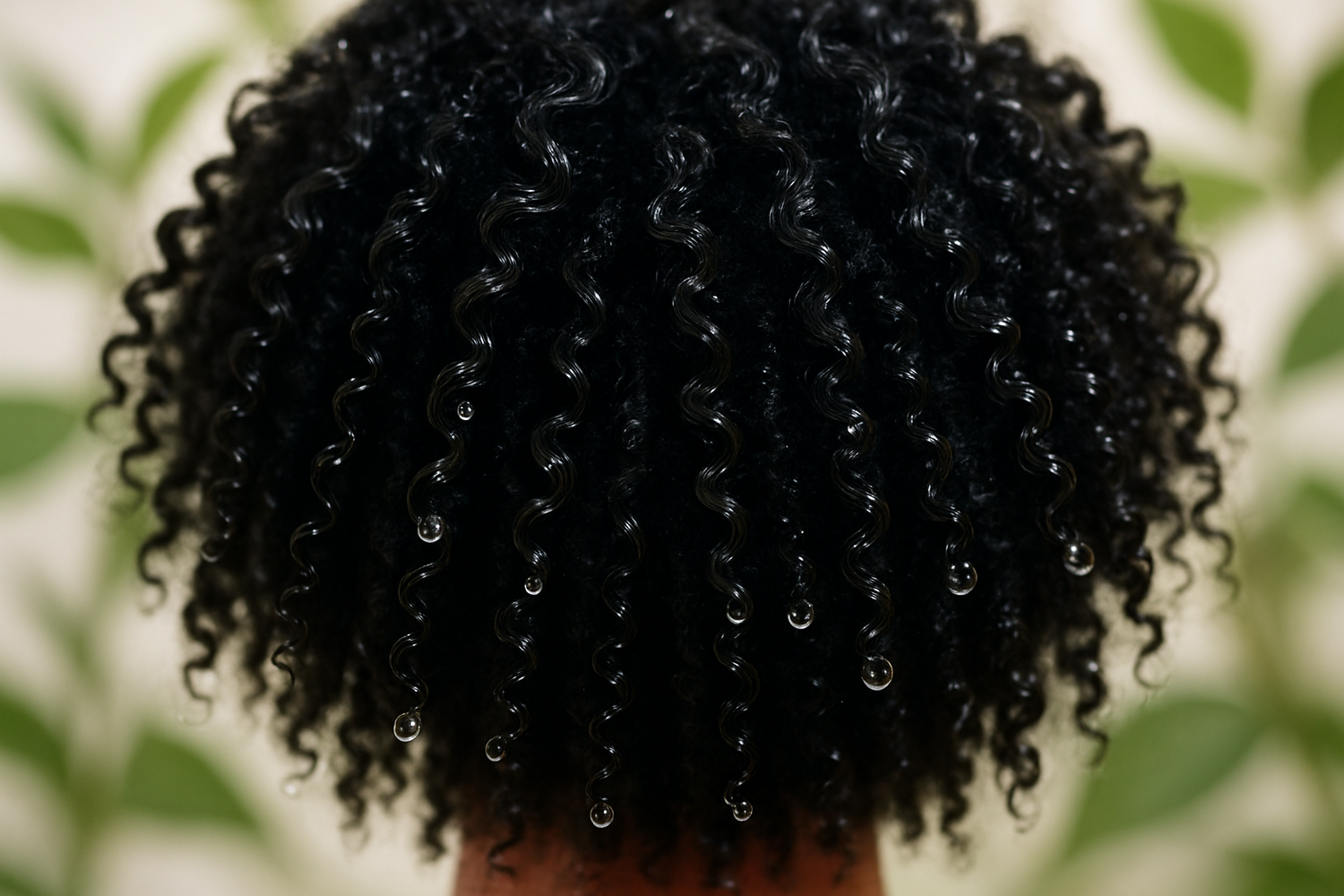The Porosity-Perfect Wash Day Routine can be tailored to your hair's specific porosity level, whether it's low, normal, or high porosity. Porosity refers to your hair's ability to absorb and retain moisture. Here's a step-by-step guide to help you create a routine that suits your hair's needs:
Step 1: Pre-Poo (Optional) Pre-pooing involves applying a nourishing oil or conditioner to your hair before shampooing. This helps protect your hair from excessive moisture loss during the cleansing process.
-
Choose an oil or conditioner: Opt for a lightweight oil like coconut, jojoba, or argan oil. Alternatively, you can use a silicone-free conditioner.
-
Apply to dry hair: Generously apply the chosen product to dry hair, focusing on the ends and any areas that are particularly dry.
-
Detangle: Gently detangle your hair using a wide-tooth comb or your fingers to remove any knots or tangles.
Step 2: Shampoo Choose a sulfate-free, moisturizing shampoo that suits your hair's needs.
-
Wet your hair: Thoroughly wet your hair with warm water.
-
Apply shampoo: Pour a small amount of shampoo into your palm and apply it to your scalp. Gently massage your scalp using your fingertips, avoiding excessive friction that can damage the hair.
-
Rinse: Rinse the shampoo out with lukewarm water. Be sure to allow the water to flow down your strands, avoiding rough manipulation.
Step 3: Condition Use a hydrating and nourishing conditioner to replenish moisture and restore the hair's pH balance.
-
Apply conditioner: Squeeze out excess water from your hair and apply conditioner, focusing on the mid-lengths and ends. Avoid applying conditioner directly to the scalp if you have oily-prone roots.
-
Detangle: Use a wide-tooth comb or your fingers to gently detangle your hair while the conditioner is still in. Start from the tips and work your way up.
-
Let it sit: Leave the conditioner on for the recommended time on the product label. This allows your hair to absorb the moisture and nutrients.
-
Rinse: Thoroughly rinse out the conditioner with cool water. This helps to seal the hair's cuticle and retain moisture.
Step 4: Deep Conditioning (Optional, but Recommended) Deep conditioning provides intense hydration and repair. Use a deep conditioning treatment that matches your hair's needs.
-
Apply deep conditioner: Apply a generous amount of deep conditioner to your hair, focusing on the ends and more damaged areas.
-
Cover your hair: Use a shower cap or plastic wrap to cover your hair and enhance the conditioning process. You can also use a heated cap or towel for added penetration.
-
Wait and rinse: Follow the recommended time on the product label for deep conditioning. Afterward, rinse out the deep conditioner with cool water.
Step 5: Leave-In Conditioner or Moisturizer Apply a lightweight leave-in conditioner or moisturizer to provide ongoing hydration and help with detangling.
-
Apply leave-in: Distribute a small amount of leave-in conditioner or moisturizer through your damp hair, focusing on the lengths and ends.
-
Detangle: Use your fingers or a wide-tooth comb to gently detangle your hair again if needed.
Step 6: Porosity-Specific Treatment (Low, Normal, or High) Choose a treatment that addresses your hair's porosity level:
-
Low Porosity: Use heat to open the cuticle and allow better product absorption. Apply a water-based leave-in and use a hair steamer or hooded dryer to gently warm your hair for 15-20 minutes.
-
Normal Porosity: A balanced routine is suitable. Focus on maintaining moisture and protein balance.
-
High Porosity: Use protein treatments to strengthen the hair. Look for products that contain hydrolyzed proteins. Follow the product instructions for usage.
Step 7: Seal and Style Sealing in moisture and styling your hair is the final step.
-
Apply a sealing oil: If your hair tends to be dry, apply a lightweight sealing oil like argan or jojoba oil to lock in moisture.
-
Style: Choose your desired styling method, whether it's air-drying, using heat tools, or protective styling. Use products that provide hold and definition without drying out your hair.
Remember that consistency is key when it comes to maintaining healthy hair. Adjust your routine as needed based on the changing needs of your hair and any environmental factors. It's also important to use products that are suitable for your hair's texture and needs.





1 comment
Hello. I have a few questions. 1. In the step 3, you said to detangle while the conditioner is still in it (So to take out the twist/braid I did), then let the conditioner sit in my hair for the recommended time on the label then thoroughly rinse out the conditioner with cool water (Meaning now my hair is not in twist or braids anymore, but not tangled and just down to my back, am I right? 2. Afterwards, in step 4, you said to apply a deep conditioner to my hair and to use a shower cap or a plastic wrap to cover my hair, then to wait untill the recommended time on the product label is done, do I run and comb/brush and finger detangle my hair as the deep conditioner is in my hair to make sure it’s smooth and no knots still like detangle it because you didn’t say that, but did in step 5. My next question goes to step 5 from step 4 also, you said to apply a lightweight leave-in conditioner or moisturizer to my hair, then you said to detangle, but you didn’t say to detangle in step 4, do I detangle again? Then, now to my last 3 questions, in step 6, you said “porosity specific treatment”, then you said to choose a treatment that addresses my hair porosity level (I have high porosity hair) and to use protein treatments to strengthen my hair, does this protein treatment is what I’m using in my hair for step 4 (Deep conditioning)? Now my next question before my last question, Do I use the loc/lco method for leave-in conditioner or moisturizer? If I do, do I wait until my Loc/lco braids/twist is done in it’s state, then unbraid/untwist my hair then do step 7, which is to seal and then style like you said, do I do a natural protective hairstyle in my hair and if I do, don’t I do my natural protective hairstyle first and then seal in with an oil or do I actually have to put my oil first then do my natural protective hairstyle last? I hope this isn’t too much of to read, by the way.